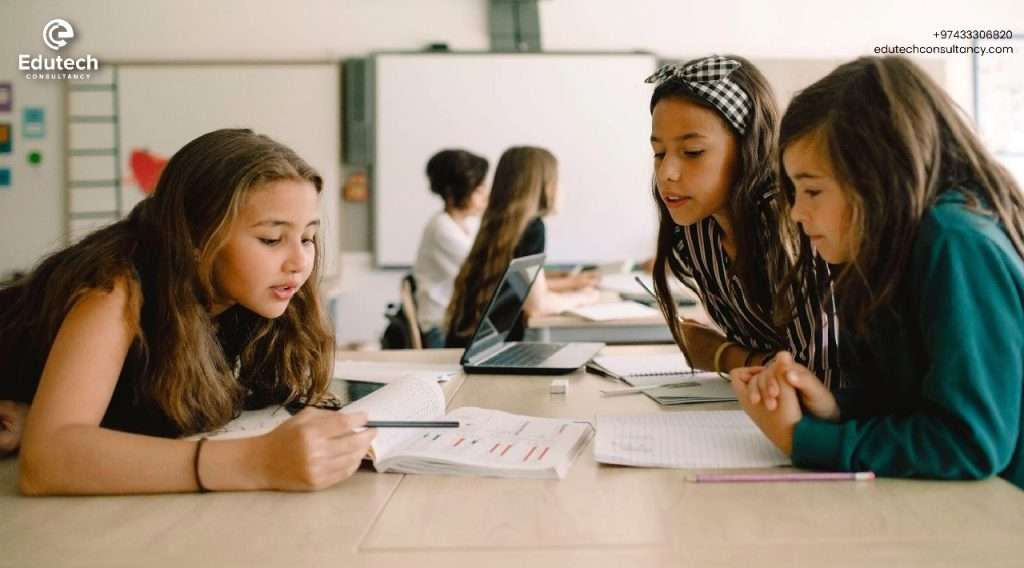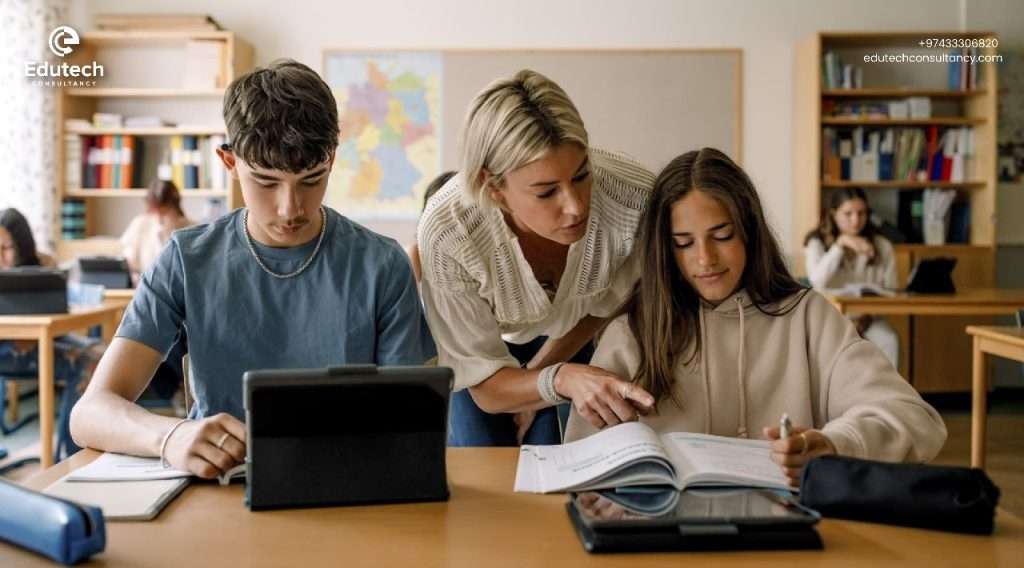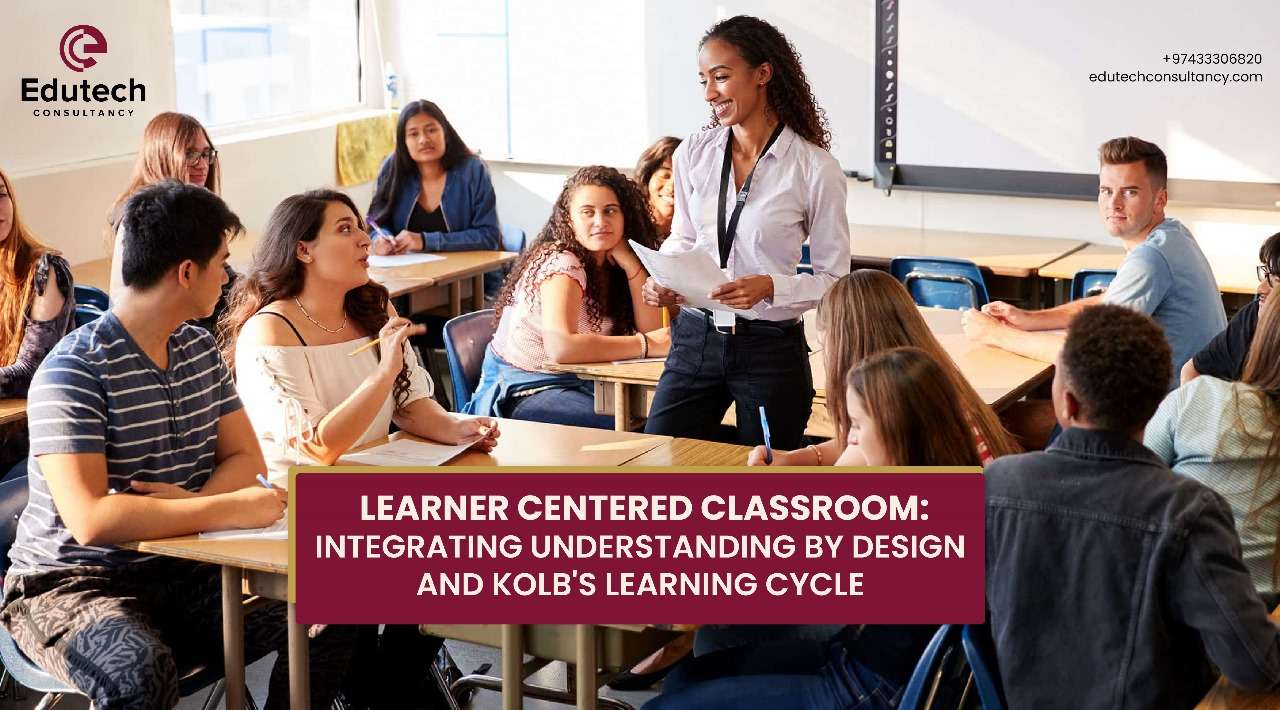In the context of modern education, one term is consistently coined, a learner centered approach. This approach goes beyond traditional methods, keeping the students the focus of learning, modifying educational experiences to raise deeper understanding and also long lasting retention. Central to this concept are two powerful frameworks: Understanding by Design (UbD) and Kolb’s Learning Cycle. This blog will explore the basics about a Learner Centered Classroom with the integration of these two methods. In addition, how the incorporation of these enable educators to create dynamic, impactful, and student driven learning environments.
Defining Learner Centered Classroom
A learner-centered approach changes the focus from teacher-driven teaching to student-led learning. Moreover, students become active learners in the classroom. In addition, teachers provide the needed guidance to help students explore and investigate. It also encourages students to think critically and build knowledge in useful ways. In short in a learner centered classroom the focus is on personalized learning, which helps students connect schoolwork with real-life situations.
Key Benefits of a Learner Centered Classroom
- Students are more engaged in learning when they have their say in the learning.
- Help to develop critical thinking, problem solving, and collaboration skills in students.
- Learner centered experiences are also more retainable promoting a long term understanding.
What is Understanding by Design (UbD): Backward Planning for Student Success
Understanding by Design (UbD) promotes backward planning. This means that the educators begin the process with the end result or correspondingly students’ learning goal in mind. In contrast the traditional teaching often focuses on delivering content sequentially without a clear endpoint. Furthermore, UbD has three stages:
- Define evidence to develop assessments that measure student’s learning goals.
- Identify the desired results that students should know and be able to do by the end of the lesson or unit.
- Plan the learning experiences with instruction to help students lead towards achieving these goals.

UbD in alignment with the learner centered approach starts exactly with learning outcomes for students. Teacher’s plan learning activities that are personalized to the skills and understanding. Hence, this ensures that the instructional path is as meaningful and relevant as the desired end result.
Benefits of UbD for a Learner Centered Classroom
- Enhances students understanding to encourage true comprehension.
- Emphasizes assessments that let students demonstrate understanding in a way that exactly resonates with their strengths and interests.
- Includes active Learning like project based learning, group discussions, or experiments by teachers to instill curiosity and motivation in learning.
Kolb’s Learning Cycle: A method for Experiential Learning
David Kolb’s Learning Cycle is an approach used for experiential learning. This model highlights learning through experience. It also revolves around the belief that students learn more effectively by actively engaging with material, reflecting on their experiences, and adapting to new situations.

Kolb’s cycle has four stages. Therefore, these stages help students go through to solidify understanding in the relevant contexts they have learnt.
- Concrete Experience: Taking active role in an activity.
- Reflective Observation: Thinking about what students learnt from the activity.
- Abstract Conceptualization: Inferring theories or conclusions based on reflective observation.
- Active Experimentation: Students apply the learning in new settings to test the conclusions learnt.
Aspects of Kolb’s Learning Cycle
Kolb’s learning Cycle greatly complements the learner centered learning approach. Through this students rather than passively gathering information engage in the learning material themselves as active learners. Here are some key aspects of the Kolb’s method:
- It allows students to learn differently.
- Develops critical reflection and adaptation skills in students.
- Students successfully experiment, reflect, and apply learnt knowledge with continuous growth.
Integrating Understanding by Design and Kolb’s Learning Cycle in the Classroom
Combining the above mentioned two approaches namely the UbD and Kolb’s Learning Cycle educators can create a holistic learning experience for students. These methods are highly personalized revolving around the learner and impactful in practical ways, however to provide clear outcomes for students.
Conclusion: Building a Learner Centered Classroom
Integrating Understanding by Design and Kolb’s Learning Cycle can truly transform a traditional classroom into a dynamic, learner centered classroom. This method allows teachers to plan, design and implement purposeful, engaging experiences that help students not only understand but also apply their knowledge in meaningful ways. When students in a classroom feel the freedom to explore and connect their learning to the world around them, they achieve both the confidence and the skills they need to prosper in the classroom and beyond. Furthermore, these two frameworks can help educators create a truly learner centered classroom that promotes genuine curiosity and life learning in students.
Edutech Consultancy in Qatar is providing an exclusive workshop to teachers in Qatar to learn more in-depth about this wonderful approach. Besides that, this workshop will provide a profound knowledge about what is UbD and Kolb’s learning cycle. Additionally, the workshop will allow you to discover how to effectively implement this method to achieve more success for your students.
So, to reserve your spot for the workshop click here and get on-board to learn how to put your students at the fore-front of learning experiences.
FAQs
What is the difference between a learner centered classroom and traditional teaching?
In a learner centered setup the focus is on student driven learning rather than teacher led instruction. In the traditional method the teacher delivers instruction, whereas in a learner centered approach the students actively engage, ask questions. Furthermore in a learner centered setup the teacher’s guide students towards independent thinking.
How do Understanding by Design (UbD) and Kolb’s Learning Cycle support a learner-centered classroom?
UbD and Kolb’s Learning Cycle are two methods that work to create a structured and engaging learning experience. UbD focuses on firm planning, where lessons are designed to achieve specific learning goals by starting with the end objective in mind. Kolb’s Learning Cycle, on the other hand, focuses on learning through four stages: experience, reflection, conceptualization, and application. Combining both educators gives a clear framework to promote active learning in the classroom.
What are the benefits of a learner centered classroom with these approaches?
- Boost students engagement
- Increase knowledge retention
- Students grasp really well what they learn
- Provide students opportunity for hands-on learning
- Makes it easier for teachers to assess understanding


